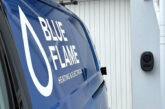
When it comes to EV charge points, there are a number of factors that can influence functionality and service life. Rolec discusses the importance of weather resistance and how electrical contractors and EV drivers can help to ensure wet weather doesn’t cause avoidable problems.
Choosing a charge point can be a difficult decision; factors such as aesthetics, power supply, and cost may all be considerations. Few, however, will think twice about environmental protection. After all, every charger is manufactured to meet stringent standards, of which weather resistance (IP) is just one.
The IP system is a sliding scale but one which isn’t always widely understood. Upon seeing an IP rating, many will simply assume the equipment is proofed against all levels of water ingress and won’t consider that they may have their part to play in ensuring the equipment can continue to meet the standard. To maintain the required level of water resistance, charge points should be installed with thought as to where the unit is placed. For example, while the required IP standard tests units for a defined period of time, this doesn’t mean the unit will always withstand weeks on end under a leaking gutter.
Fortunately, we rarely see this level of negligence; more common is innocent ignorance where an end user has used a pressure washer or, for convenience, has left their cable stretched out along the drive.
Most cables, of course, come with a rubber dust cap to protect the open end of the plug, and for occasional short-term use this may be fine, but rubber is flexible and could wear over time or become misshaped if not fitted correctly. Any gaps will undoubtedly cause problems as the cap and plug retains water, leading the charge point to malfunction.
The best protection is most reliably achieved when the plug is properly connected to a vehicle and/or the charge point. Rolec’s tethered units, for example, come with a plug ‘holster’ (a blank socket) specifically for securing the plug to keep it free of damage and contamination.
So, how do electrical contractors and drivers prevent water damage to their charge points?
Rolec advises its electrical contractors and installers to coil the charge point cable around the cable tidy, ensuring there are no sharp bends or kinks and to store the plug in the plug holster. The plug shouldn’t be subjected to contamination, whether that be through rainfall or dropping it into a puddle. Avoiding water contamination will ensure the charge point’s functionality remains at its best, enabling hassle-free charging.
Follow the expert guidance
If the electrical installer completes the installation of the charge point by following the method advised by the manufacturer (in this case Rolec), and stresses the importance of good cable storage and care to the end user, the charge point should withstand wet weather conditions for years to come.
View the Rolec EV charging catalogue by clicking here









